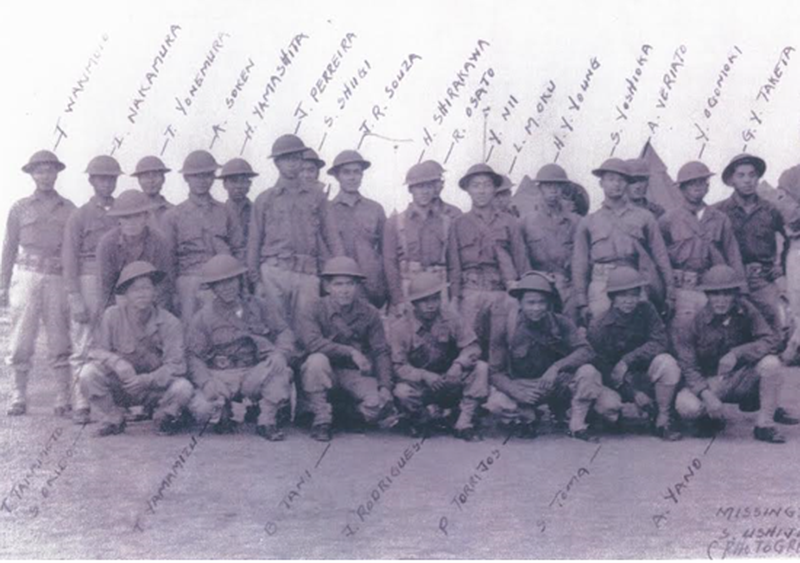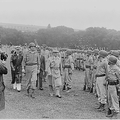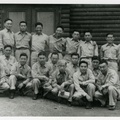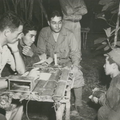Eight Nisei were saved and 12 were killed when a Japanese submarine torpedoed a US Army transport near Maui, Hawaii, on January 28, 1942, just seven months after the Pearl Harbor attack. A few months later the eight Nisei joined the 100th Infantry Battalion and miraculously survived nearly two years of combat in Europe. The 20 Nisei were among the 60 men aboard the USS Royal T. Frank, which transported military personnel, equipment and ammunition to the various islands of the Territory of Hawaii. The Nisei were returning to Hilo after basic training at Schofield Barracks, Honolulu.
The USS Frank, one of the three-vessel convoy, including a destroyer, left Honolulu on July 27, 1942, and arrived in Kahului, Maui, early the following morning. After a brief port call the vessel departed for Hilo. Peter Von Buol, an adjunct professor of journalism and freelance writer, using Adjutant General’s Office classified Decimal files, AGF 579.14 (submarine project files) originally classified SECRET, published the following account:
At 7:00 AM on January 28, 1942, approximately 30 miles north of the Hawaii’s Upolu Point in the Alenuihaha channel an unnamed ship’s officer saw a torpedo, moving slowly, coming towards the USS Frank. He shouted “torpedo.” The torpedo hit the starboard side of the Frank that caused a loud explosion. Flying debris killed USS Frank’s captain Wiechert, men on the deck were thrown into the sea or they jumped out. Clinging to any floating debris, they were rescued three hours later. The USS Frank sank in about a minute after being hit taking the men below deck with it. Of the 60 men in the vessel, there were 36 survivors, including 9 men of 299th Regiment, eight of them Nisei. The other survivors included crew members. The survivors, covered with oil, were taken to a school gymnasium in Hana, Maui, where the students helped to get them cleaned up and comfortable. A Navy medic arrived from Honolulu. The survivors were warned not to discuss their experience with anyone. The USS Frank has not been found.
The 12 Nisei who sank with the Frank are:
- Iwao Nakamura, Kealakekua, Kona, HI
- Yoshito Nii, Papaikou, HI
- Shoji Okido, Honomu, HI
- Muneo Larry Oku, Koloa, HI
- Reginald M. Osato, HI
- Shinichi Shiigi, Honolulu, HI
- Raymond H.Shirakawa, Waiohino, HI
- Yeishun A. Soken, Waiakeauka, HI
- Bushichi Tani, Papaikou, Hi
- Torao Yamamizu, Pepeekeo, Hi
- Albert H. Yano, Koloa, HI
- Yonezo Yonemura, Keopu, Hi
The 12 Nisei with the rank of inductee are memorialized on white walls at the Missing in Action (MIA) section of the National Memorial Cemetery of the Pacific (Punchbowl) and on a bronze plaque at the East Hawaii Veterans Cemetery #1 in Hilo, Hawaii. Each soldier was awarded the Purple Heart Medal, which is awarded only to soldiers killed or wounded in combat.
The eight Nisei survivors (awards data from Thomas D. Murphy, Ambassador in Arms):
- PFC Yoshio Ogomori; Mountain View, HI; Hq. Co/100; CIB, SS, BS, PH, DUB
- Tokimaru Takamoto; Captain Cook, HI; Hq. Co/100. No award listed
- George Y. TAKETA, Hilo, HI; Med. Det/100; Combat Medic Badge, BS, PH,
- CPL Shizuo Toma; Pahoa, Hi; Hq. Co/100; CIB, BS
- PFC Shigeru Ushijima; Hilo, HI; Hq. Co/100; CIB, BS, PH, DUB
- Mac Tsutomu Wakimoto; Hq. Co/100; CIB, BS
- PFC Haruo Yamashita; Kurtistown, HI; C. Co/100; CIB, BS
- Pvt Susumu Yoshioka ; Hilo, HI; A. Co/100; CIB, BS, PH
Survivor Raymond Wakimoto saw the torpedo and thought it was a large fish. When the vessel exploded he thought it was a dream. When he floated in the ocean he thought “it was the end of the world.” He adopted a personal policy when riding future troopships to always sleep on the deck. At the 100th Battalion Veterans 1972 reunion, Frank survivor Ogomori said the morning of January 28 was rainy and misty. He recalled hearing a thud while he was going up the deck, then an explosion, and then found himself in the ocean floating near Ushjijima.
The eight Nisei survivors returned to their 299th Regiment at Schofield Barracks. In late May 1942, 1,432 Nisei infantrymen, including the eight survivors, were formed into the Hawaii Provisional Infantry Battalion with LTC Farramt L. Turner as Commander and CAPT James W. Lovell as Chief of Staff. Turner told the 100th men he was ordered to appoint only haoles (Caucasian in Hawaiian) to serve as company commanders and thus appointed CAPT Alex E. McKenzie, CAPT Phillip B. Peck, CAPT John A. Johnson, CAPT Clarence R. Johnson, and CAPT Charles A. Benamen, all born in or long-time residents of Hawaii. On May 28, 1942, Turner told the men they would be shipped to the mainland, but they could not tell their families, and all passes were cancelled. On June 5, 1942, the men boarded the SS Maui and left Honolulu quietly headed for Oakland, California, where the Battalion was designated the 100th Infantry Battalion.
The USS Frank Nisei survivors formed an exclusive club called Torpedo Gang, which held a reunion each year to honor the 12 Nisei who sank with the USS Frank. The eight Gang members were assigned to different companies. Apart from Takamoto, each of four other Hq Co assignees received the Combat Infantryman’s Badge (CIB) or Combat Medic Badge (CMB) and the BS. In view of this awards record, it can be presumed that Takamoto, at a minimum, received the CIB and BS. In addition, three others received the CIB, one other received the Silver Star, four others received the Purple Heart, three others received the Bronze Star, and one became a prisoner of war (POW).
A review of the Gang’s combat decorations suggests these men were not assigned to “safe assignments” or given preferential treatment to compensate for their USS Frank nightmare. It is a miracle that all survived the 100th’s high attrition rate in the nearly two years of combat in the European combat zones. Susumu Yoshioka is the only Gang member known to become a German prisoner. The 100th Bn Veterans Education Center write-up stated “Yoshioka was captured in January 1944 probably during the assault on the Gustav Line and was officially registered as a POW on January 22, 1944. He was sent to Stalag VII in Moosburg, Germany and was liberated on July 25, 1945.” While Yoshioka was not presented with a Purple Heart Medal for his back injury resulting from the USS Frank sinking, the injury was viewed as a service-connected disability for postwar benefits purposes.
Peter Von Buol reported that on February 1, 1944, the Japanese submarine that sank the USS Frank was sunk by the US Navy off Bougainville in New Guinea.
[JAVA Research Team comment: JRT appreciates the research assistance provided by Jayne Hirata, editor of Puka Puka Parade. Also, our thanks to LTC Wayne Yoshioka, USA Ret, Afghanistan combat veteran, who discussed Susumu Yoshioka’s POW status and arranged the use of the group photo which accompanies this article. Finally, our thanks to JAVA member Wade Ishimoto, who, during his visit to Paradise, spent five hours with members of his family at Punchbowl to research and take photos of the Nisei who sank with the USS Royal T. Frank.]
*This article was originally published in the Japanese American Veterans Association’s e-Advocate, Vol. 1, No. 2, June 2019 issue.
© 2019 JAVA Research Team






